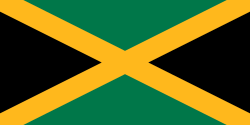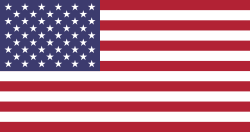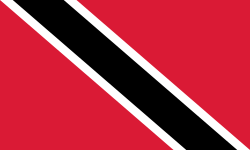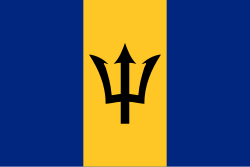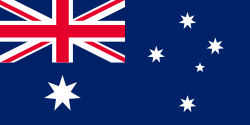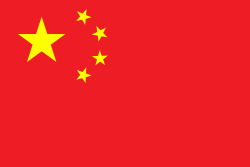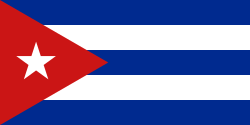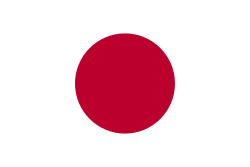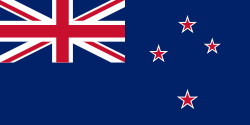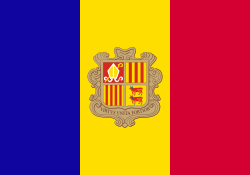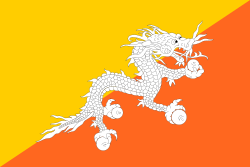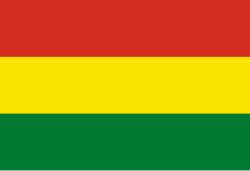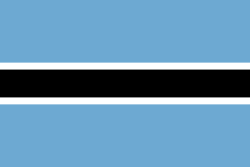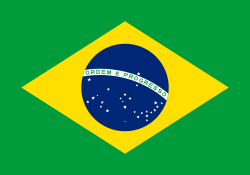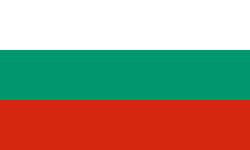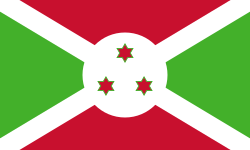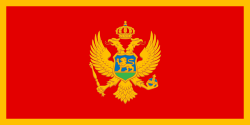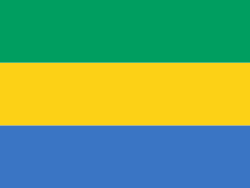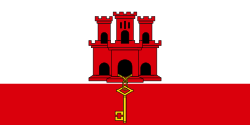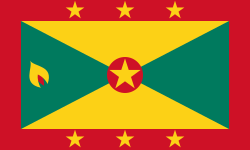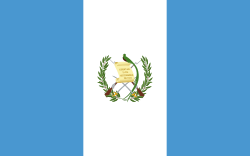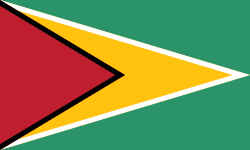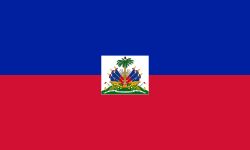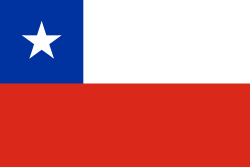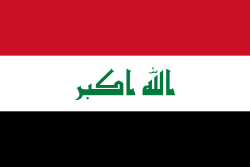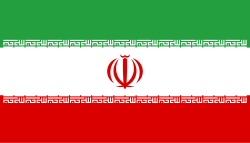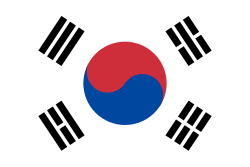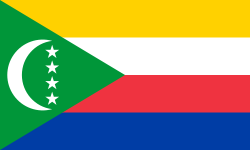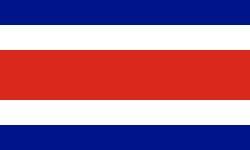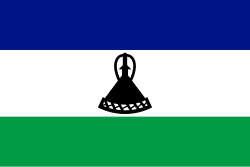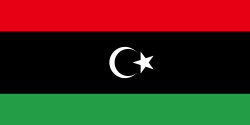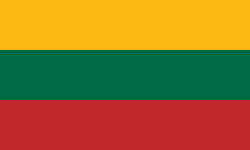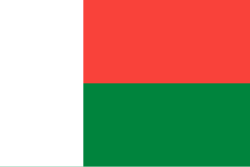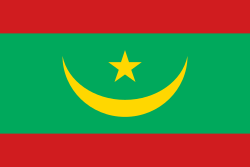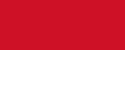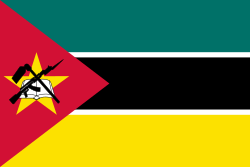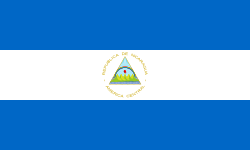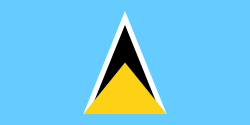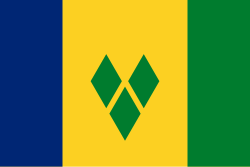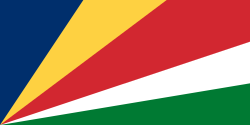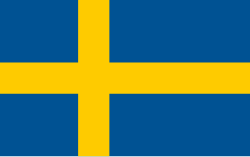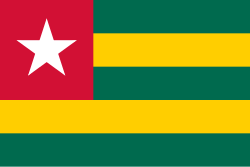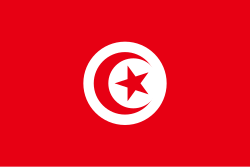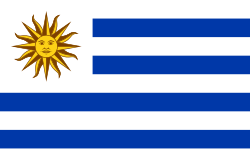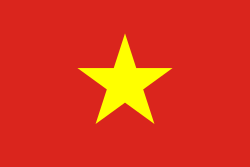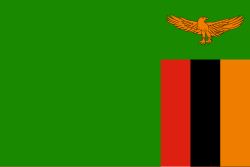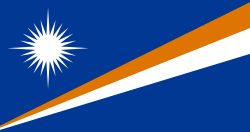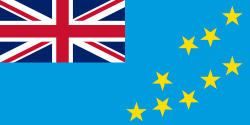Mistrovství světa v atletice 2009
| Mistrovství světa v atletice 2009 | |
|---|---|
| Místo | Olympijský stadion Berlín |
| Země | Německo |
| Pořadatel | Světová atletika |
| Datum | 15. srpna 2009 – 23. srpna 2009 |
| Účast | 1 895 |
| Předchozí | Mistrovství světa v atletice 2007 |
| Následující | Mistrovství světa v atletice 2011 |
| Web | www |
| Některá data mohou pocházet z datové položky. | |
Mistrovství světa v atletice 2009  | ||||
|---|---|---|---|---|
| Sprinty | ||||
| 100 m | muži | ženy | ||
| 200 m | muži | ženy | ||
| 400 m | muži | ženy | ||
| Střední tratě | ||||
| 800 m | muži | ženy | ||
| 1500 m | muži | ženy | ||
| Dlouhé tratě | ||||
| 5 000 m | muži | ženy | ||
| 10 000 m | muži | ženy | ||
| Marathon | muži | ženy | ||
| Překážky | ||||
| 100 m překážek | ženy | |||
| 110 m překážek | muži | |||
| 400 m překážek | muži | ženy | ||
| Steeplechase | muži | ženy | ||
| Štafety | ||||
| 4×100 m | muži | ženy | ||
| 4×400 m | muži | ženy | ||
| Chůze | ||||
| 20 km | muži | ženy | ||
| 50 km | muži | |||
| Skoky | ||||
| Dálka | muži | ženy | ||
| Trojskok | muži | ženy | ||
| Výška | muži | ženy | ||
| Tyč | muži | ženy | ||
| Vrhy a hody | ||||
| Koule | muži | ženy | ||
| Disk | muži | ženy | ||
| Oštěp | muži | ženy | ||
| Kladivo | muži | ženy | ||
| Víceboje | ||||
| Sedmiboj | ženy | |||
| Desetiboj | muži | |||
12. mistrovství světa v atletice (oficiálním anglickým názvem: 12th IAAF World Championships in Athletics berlin 2009™) se konalo mezi 15. srpnem a 23. srpnem 2009 v hlavním městě Německa, v Berlíně.
Většina soutěží probíhala na Berlínském olympijském stadiónu; výjimkami byly maratónské běhy a 20 i 50 km chůze, které se celé odbývaly v ulicích města, se startem i cílem u Braniborské brány. Mistrovství se zúčastnilo 2101 sportovců (1154 mužů a 947 žen), reprezentujících 202 z 213 členských zemí IAAF.[1]
Pořadatelství
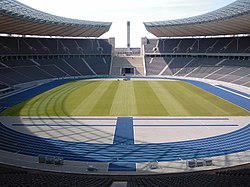
Poté, co se roku 2001 britský Londýn z finančních důvodů odřekl pořadatelství MS pro rok 2005, rozhodl se berlínský senát žádat o přidělení této akce. Mezi dalšími možnými německými městy, které tehdy Německý atletický svaz (DLV) zvažoval, dostal Berlín přednost před Mnichovem a Stuttgartem, ale přihláška Berlína v roce 2002 neuspěla; při konečném výběru uchazečů dostaly přednost finské Helsinky.
Berlíňané se nicméně rozhodli žádost opakovat pro termín 2009. O uspořádání tohoto MS se dále ucházela města: australský Brisbane, belgický Brusel, marocká Casablanca, indické Nové Dillí, chorvatský Split, jihokorejské Tegu a španělská Valencia. Na zasedání IAAF, konané v prosinci 2004 v Helsinkách, bylo MS 2009 poměrem hlasů 24:2 přiřčeno Berlínu, který se tak po Stuttgartu 1993 stal druhým německým městem, hostícím atletické mistrovství světa pod otevřeným nebem.
Rozpočet organizačního výboru se odhaduje na 45 milionů eur (předpokládaný příjem z prodej vstupenek 17 milionů €). Televizní přenosy zajišťovaly ARD a ZDF prostřednictvím zhruba 90 kamer.
Maskotem mistrovství byl vybrán hnědý medvídek Berlino v zelenomodrém atletickém oblečení (barvy modrá a zelená dominují grafickému ztvárnění celého šampionátu). Ku příležitosti konání světového šampionátu byla vydána série pamětních známek a mince.[2]
Památné výkony
MS v Berlíně se zapsalo do historie zejména famózními světovými rekordy jamajského sprintera Usaina Bolta. Na stometrové trati zaběhl čas 9,58 s. (první v historii pod 9,60 s.) a na dvojnásobné trati 19,19 s. (první pod 19,30 i 19,20 s.). K dubnu roku 2016 jsou tyto světové rekordy stále v platnosti.
Česká účast
V nominaci Českého atletického svazu na mistrovství světa v Berlíně bylo 22 českých atletů a atletek.[3]
Medailisté
Muži
Ženy
Medailové pořadí
| Umístění | Stát | Zlato | Stříbro | Bronz | Celkem |
|---|---|---|---|---|---|
| 1. | 10 | 6 | 6 | 22 | |
| 2. | 7 | 4 | 2 | 13 | |
| 3. | 4 | 5 | 2 | 11 | |
| 4. | 5 | 2 | 7 | 14 | |
| 5. | 2 | 4 | 2 | 8 | |
| 6. | 2 | 3 | 4 | 9 | |
| 7. | 2 | 2 | 4 | 8 | |
| 8. | 2 | 2 | 2 | 6 | |
| 9. | 2 | 1 | 0 | 3 | |
| 10. | 2 | 0 | 2 | 4 | |
| 11. | 2 | 0 | 1 | 3 | |
| 12. | 1 | 4 | 1 | 6 | |
| 13. | 1 | 1 | 2 | 4 | |
| 14. | 1 | 1 | 0 | 2 | |
| 15. | 0 | 0 | 1 | 1 | |
| 16. | 1 | 0 | 0 | 1 | |
| 1 | 0 | 0 | 1 | ||
| 1 | 0 | 0 | 1 | ||
| 1 | 0 | 0 | 1 | ||
| 20. | 0 | 1 | 2 | 3 | |
| 0 | 1 | 2 | 3 | ||
| 22. | 0 | 1 | 1 | 2 | |
| 0 | 1 | 1 | 2 | ||
| 24. | 0 | 1 | 0 | 1 | |
| 0 | 1 | 0 | 1 | ||
| 0 | 1 | 0 | 1 | ||
| 0 | 1 | 0 | 1 | ||
| 0 | 1 | 0 | 1 | ||
| 0 | 1 | 0 | 1 | ||
| 0 | 1 | 0 | 1 | ||
| 0 | 1 | 0 | 1 | ||
| 32. | 0 | 0 | 1 | 1 | |
| 0 | 0 | 1 | 1 | ||
| 0 | 0 | 1 | 1 | ||
| 0 | 0 | 1 | 1 | ||
| 0 | 0 | 1 | 1 | ||
| 0 | 0 | 1 | 1 |
Zúčastněné země
(v závorkách uvedeny počty vyslaných sportovců)
 Afghánistán (2)
Afghánistán (2) Albánie (1)
Albánie (1) Alžírsko (6)
Alžírsko (6) Americká Samoa (2)
Americká Samoa (2) Americké Panenské ostrovy (2)
Americké Panenské ostrovy (2) Andorra (2)
Andorra (2) Anguilla (2)
Anguilla (2) Antigua a Barbuda (2)
Antigua a Barbuda (2) Argentina (6)
Argentina (6) Arménie (2)
Arménie (2) Austrálie (38)
Austrálie (38) Ázerbájdžán (1)
Ázerbájdžán (1) Bahamy (15)
Bahamy (15) Bahrajn (10)
Bahrajn (10) Bangladéš (1)
Bangladéš (1) Barbados (4)
Barbados (4) Belgie (23)
Belgie (23) Belize (1)
Belize (1) Bělorusko (26)
Bělorusko (26) Benin (2)
Benin (2) Bermudy (1)
Bermudy (1) Bhútán (1)
Bhútán (1) Bolívie (2)
Bolívie (2) Bosna a Hercegovina (1)
Bosna a Hercegovina (1) Botswana (5)
Botswana (5) Brazílie (30)
Brazílie (30) Britské Panenské ostrovy (1)
Britské Panenské ostrovy (1) Brunej (1)
Brunej (1) Bulharsko (11)
Bulharsko (11) Burkina Faso (2)
Burkina Faso (2) Burundi (2)
Burundi (2) Cookovy ostrovy (2)
Cookovy ostrovy (2) Černá Hora (2)
Černá Hora (2) Česko (22)
Česko (22) Čína (32)
Čína (32) Dánsko (3)
Dánsko (3) Dominika (1)
Dominika (1) Dominikánská republika (6)
Dominikánská republika (6) Džibutsko (1)
Džibutsko (1) Egypt (4)
Egypt (4) Ekvádor (10)
Ekvádor (10) Eritrea (8)
Eritrea (8) Estonsko (18)
Estonsko (18) Etiopie (38)
Etiopie (38) Fidži (2)
Fidži (2) Filipíny (2)
Filipíny (2) Finsko (20)
Finsko (20) Francie (78)
Francie (78) Francouzská Polynésie (2)
Francouzská Polynésie (2) Gabon (2)
Gabon (2) Gambie (2)
Gambie (2) Ghana (3)
Ghana (3) Gibraltar (1)
Gibraltar (1) Grenada (6)
Grenada (6) Gruzie (2)
Gruzie (2) Guatemala (2)
Guatemala (2) Guinea (2)
Guinea (2) Guyana (3)
Guyana (3) Haiti (2)
Haiti (2) Honduras (2)
Honduras (2) Hongkong (1)
Hongkong (1) Chile (4)
Chile (4) Chorvatsko (5)
Chorvatsko (5) Indie (6)
Indie (6) Indonésie (2)
Indonésie (2) Irák (2)
Irák (2) Írán (2)
Írán (2) Irsko (17)
Irsko (17) Island (2)
Island (2) Itálie (37)
Itálie (37) Izrael (4)
Izrael (4) Jamajka (46)
Jamajka (46) Japonsko (57)
Japonsko (57) Jižní Afrika (24)
Jižní Afrika (24) Jižní Korea (19)
Jižní Korea (19) Jordánsko (2)
Jordánsko (2) Kajmanské ostrovy (2)
Kajmanské ostrovy (2) Kambodža (1)
Kambodža (1) Kamerun (3)
Kamerun (3) Kanada (31)
Kanada (31) Kapverdy (2)
Kapverdy (2) Katar (9)
Katar (9) Kazachstán (14)
Kazachstán (14) Keňa (43)
Keňa (43) Kiribati (2)
Kiribati (2) Kolumbie (11)
Kolumbie (11) Komory (2)
Komory (2) Republika Kongo (2)
Republika Kongo (2) Demokratická rep. Kongo (2)
Demokratická rep. Kongo (2) Kostarika (3)
Kostarika (3) Kuba (34)
Kuba (34) Kuvajt (2)
Kuvajt (2) Kypr (4)
Kypr (4) Kyrgyzstán (2)
Kyrgyzstán (2) Laos (2)
Laos (2) Lesotho (2)
Lesotho (2) Libanon (2)
Libanon (2) Libérie (3)
Libérie (3) Libye (2)
Libye (2) Litva (15)
Litva (15) Lotyšsko (15)
Lotyšsko (15) Lucembursko (1)
Lucembursko (1) Macao (1)
Macao (1) Madagaskar (1)
Madagaskar (1) Maďarsko (12)
Maďarsko (12) Makedonie (1)
Makedonie (1) Malawi (2)
Malawi (2) Malajsie (2)
Malajsie (2) Maledivy (2)
Maledivy (2) Mali (2)
Mali (2) Malta (1)
Malta (1) Maroko (22)
Maroko (22) Marshallovy ostrovy (1)
Marshallovy ostrovy (1) Mauritánie (2)
Mauritánie (2) Mauricius (4)
Mauricius (4) Mexiko (18)
Mexiko (18) Mikronésie (1)
Mikronésie (1) Moldavsko (6)
Moldavsko (6) Monako (1)
Monako (1) Mongolsko (2)
Mongolsko (2) Mosambik (2)
Mosambik (2) Myanmar (2)
Myanmar (2) Namibie (4)
Namibie (4) Nauru (2)
Nauru (2) Německo (85)
Německo (85) Nikaragua (2)
Nikaragua (2) Niger (1)
Niger (1) Nigérie (25)
Nigérie (25) Nizozemské Antily (2)
Nizozemské Antily (2) Nizozemsko (11)
Nizozemsko (11) Norsko (17)
Norsko (17) Nový Zéland (16)
Nový Zéland (16) Omán (1)
Omán (1) Pákistán (2)
Pákistán (2) Palau (2)
Palau (2) Palestina (2)
Palestina (2) Panama (3)
Panama (3) Papua Nová Guinea (2)
Papua Nová Guinea (2) Paraguay (1)
Paraguay (1) Peru (4)
Peru (4) Pobřeží slonoviny (2)
Pobřeží slonoviny (2) Polsko (42)
Polsko (42) Portoriko (5)
Portoriko (5) Portugalsko (30)
Portugalsko (30) Rakousko (5)
Rakousko (5) Rovníková Guinea (2)
Rovníková Guinea (2) Rumunsko (17)
Rumunsko (17) Rusko (106)
Rusko (106) Rwanda (3)
Rwanda (3) Řecko (22)
Řecko (22) Svatá Lucie (1)
Svatá Lucie (1) Svatý Kryštof a Nevis (7)
Svatý Kryštof a Nevis (7) Svatý Tomáš a Princův ostrov (2)
Svatý Tomáš a Princův ostrov (2) Svatý Vincenc a Grenadiny (2)
Svatý Vincenc a Grenadiny (2) Salvador (2)
Salvador (2) Samoa (2)
Samoa (2) San Marino (2)
San Marino (2) Saúdská Arábie (12)
Saúdská Arábie (12) Senegal (4)
Senegal (4) Severní Korea (6)
Severní Korea (6) Severní Mariany (2)
Severní Mariany (2) Seychely (2)
Seychely (2) Sierra Leone (2)
Sierra Leone (2) Singapur (2)
Singapur (2) Slovensko (13)
Slovensko (13) Slovinsko (13)
Slovinsko (13) Somálsko (1)
Somálsko (1) Spojené arabské emiráty (2)
Spojené arabské emiráty (2) Spojené státy americké (160)
Spojené státy americké (160) Srbsko (8)
Srbsko (8) Srí Lanka (2)
Srí Lanka (2) Středoafrická republika (2)
Středoafrická republika (2) Súdán (9)
Súdán (9) Surinam (2)
Surinam (2) Svazijsko (2)
Svazijsko (2) Šalomounovy ostrovy (2)
Šalomounovy ostrovy (2) Španělsko (51)
Španělsko (51) Švédsko (23)
Švédsko (23) Švýcarsko (11)
Švýcarsko (11) Sýrie (2)
Sýrie (2) Tádžikistán (2)
Tádžikistán (2) Tanzanie (10)
Tanzanie (10) Thajsko (1)
Thajsko (1) Tchaj-wan (2)
Tchaj-wan (2) Togo (2)
Togo (2) Tonga (2)
Tonga (2) Trinidad a Tobago (20)
Trinidad a Tobago (20) Tunisko (5)
Tunisko (5) Turecko (12)
Turecko (12) Turkmenistán (2)
Turkmenistán (2) Turks a Caicos (1)
Turks a Caicos (1) Tuvalu (2)
Tuvalu (2) Uganda (12)
Uganda (12) Ukrajina (54)
Ukrajina (54) Uruguay (3)
Uruguay (3) Uzbekistán (6)
Uzbekistán (6) Vanuatu (2)
Vanuatu (2) Spojené království (51)
Spojené království (51) Venezuela (2)
Venezuela (2) Vietnam (2)
Vietnam (2) Zambie (5)
Zambie (5) Zimbabwe (6)
Zimbabwe (6)
Odkazy
Reference
- ↑ IAAF. Entry list [PDF online]. 2009-08-10 [cit. 2009-08-16]. Dostupné v archivu pořízeném dne 2009-08-23. (anglicky https://web.archive.org/web/20090823190939/http://berlin.iaaf.org/mm/document/competitions/competition/05/26/10/20090810061856_httppostedfile_entrylist_10aug_12648.pdf)
- ↑ ŽEHANOVÁ, Barbora. Podívejte se, jaké má šampionát v Berlíně pamětní známky a minci. iDNES.cz [online]. 2009-04-03 [cit. 2013-08-04]. Dostupné online.
- ↑ HLOCH, Jan, Radio.cz. Atletický šampionát míří podruhé v historii do Německa. Radio.cz [online]. 2009-08-10 [cit. 2013-08-04]. Dostupné online.
Související články
Externí odkazy
 Obrázky, zvuky či videa k tématu Mistrovství světa v atletice 2009 na Wikimedia Commons
Obrázky, zvuky či videa k tématu Mistrovství světa v atletice 2009 na Wikimedia Commons - Oficiální stránky IAAF (anglicky)
- Kompletní přehled výsledků (anglicky)
- Kompletní přehled výsledků (německy)
Média použitá na této stránce
Pictograms of Olympic sports – . This is an unofficial sample picture. Images of official Olympic pictograms for 1948 Summer Olympics and all Summer Olympics since 1964 can be found in corresponding Official Reports.
Flag of Jamaica. “The sunshine, the land is green, and the people are strong and bold” is the symbolism of the colours of the flag. GOLD represents the natural wealth and beauty of sunlight; GREEN represents hope and agricultural resources; BLACK represents the strength and creativity of the people. The original symbolism, however, was "Hardships there are, but the land is green, and the sun shineth", where BLACK represented the hardships being faced.
Used color: National flag | South African Government and Pantone Color Picker
| zelená | rendered as RGB 0 119 73 | Pantone 3415 C |
| žlutá | rendered as RGB 255 184 28 | Pantone 1235 C |
| červená | rendered as RGB 224 60 49 | Pantone 179 C |
| modrá | rendered as RGB 0 20 137 | Pantone Reflex Blue C |
| bílá | rendered as RGB 255 255 255 | |
| černá | rendered as RGB 0 0 0 |
Vlajka Etiopie
Flag of Australia, when congruence with this colour chart is required (i.e. when a "less bright" version is needed).
See Flag of Australia.svg for main file information.Flag of Portugal, created by Columbano Bordalo Pinheiro (1857-1929), officially adopted by Portuguese government in June 30th 1911 (in use since about November 1910).
Flag of Canada introduced in 1965, using Pantone colors. This design replaced the Canadian Red Ensign design.
Zelený pruh má znázorňovat většinové katolické obyvatelsto Irska, oranžový pruh reprezentuje protestantskou menšinu a bílý pruh uprostřed znázorňuje mír a harmonii mezi nimi.
Při zobrazení tohoto souboru lze snadno přidat orámování
Vlajka České republiky. Podoba státní vlajky České republiky je definována zákonem České národní rady č. 3/1993 Sb., o státních symbolech České republiky, přijatým 17. prosince 1992 a který nabyl účinnosti 1. ledna 1993, kdy rozdělením České a Slovenské Federativní republiky vznikla samostatná Česká republika. Vlajka je popsána v § 4 takto: „Státní vlajka České republiky se skládá z horního pruhu bílého a dolního pruhu červeného, mezi něž je vsunut žerďový modrý klín do poloviny délky vlajky. Poměr šířky k její délce je 2 : 3.“
This is the national flag of Belgium, according to the Official Guide to Belgian Protocol. It has a 13:15 aspect ratio, though it is rarely seen in this ratio.
Its colours are defined as Pantone black, Pantone yellow 115, and Pantone red 032; also given as CMYK 0,0,0,100; 0,8.5,79,0; and 0,94,87,0.| Flag of Bolivia* | |
|---|---|
| country | Template:I18n/Republic of Bolivia |
| used by | Bolivia |
| from | 1851 |
| until | Present |
| created by | Government of Bolivia |
| format | 15:22 |
| shape | rectangular |
| colours | červená, žlutá, zelená
flag has 3 horizontal stripes |
| other characteristics | A horizontal tricolor of red, yellow and green. |
Flag of Burkina Faso
The flag of the Dominican Republic has a centered white cross that extends to the edges. This emblem is similar to the flag design and shows a bible, a cross of gold and 6 Dominican flags. There are branches of olive and palm around the shield and above on the ribbon is the motto "Dios,Patria!, Libertad" ("God, Country, Freedom") and to amiable freedom. The blue is said to stand for liberty, red for the fire and blood of the independence struggle and the white cross symbolized that God has not forgotten his people. "Republica Dominicana". The Dominican flag was designed by Juan Pablo Duarte, father of the national Independence of Dominican Republic. The first dominican flag was sewn by a young lady named Concepción Bona, who lived across the street of El Baluarte, monument where the patriots gathered to fight for the independence, the night of February 27th, 1844. Concepción Bona was helped by her first cousin María de Jesús Pina.
The flag of the Dominican Republic has a centered white cross that extends to the edges. This emblem is similar to the flag design and shows a bible, a cross of gold and 6 Dominican flags. There are branches of olive and palm around the shield and above on the ribbon is the motto "Dios,Patria!, Libertad" ("God, Country, Freedom") and to amiable freedom. The blue is said to stand for liberty, red for the fire and blood of the independence struggle and the white cross symbolized that God has not forgotten his people. "Republica Dominicana". The Dominican flag was designed by Juan Pablo Duarte, father of the national Independence of Dominican Republic. The first dominican flag was sewn by a young lady named Concepción Bona, who lived across the street of El Baluarte, monument where the patriots gathered to fight for the independence, the night of February 27th, 1844. Concepción Bona was helped by her first cousin María de Jesús Pina.
Finská vlajka
Flag of Gibraltar
Georgian flag in Pantone MS.
The national and official state flag of Haiti; arms obtained from File:Coat of arms of Haiti.svg. The civil flag can be found at here.
Note: The color selected is «turquoise blue» (the color mentioned in the decree), as defined by Pantone.
Při zobrazení tohoto souboru lze snadno přidat orámování
bendera Indonesia
Flag of Iran. The tricolor flag was introduced in 1906, but after the Islamic Revolution of 1979 the Arabic words 'Allahu akbar' ('God is great'), written in the Kufic script of the Qur'an and repeated 22 times, were added to the red and green strips where they border the white central strip and in the middle is the emblem of Iran (which is a stylized Persian alphabet of the Arabic word Allah ("God")).
The official ISIRI standard (translation at FotW) gives two slightly different methods of construction for the flag: a compass-and-straightedge construction used for File:Flag of Iran (official).svg, and a "simplified" construction sheet with rational numbers used for this file.
The Flag of Iceland.
- Horizontal aspect ratio: 7:1:2:1:14;
- Vertical aspect ratio: 7:1:2:1:7.
Flag of Laos
Flag of Maldives. The colours used are Pantone 186 C for red and Pantone 348 C for green.
Flag of Mauritania, adopted in 2017. The National Assembly added red stripes to the top and bottom edges to represent “the blood shed by the martyrs of independence”.
Flag of Namibia
The national flag of Nauru. Pantone 280c (Blue) and Pantone 123c (Yellow). On Pantone's official website these colours have the hexadecimal codes of #012169 and #FFC72C.
Flag of the Ivory Coast, written by Jon Harald Søby, modified by Zscout370. The colors match to what is reported at http://fotw.vexillum.com/flags/ci.html.
Flag of Rwanda. The flag ratio is 2:3 with the stripes being 2:1:1. Colors are the following officially: Pantone 299 C 2X (blue), RAL 6029 (green), RAL 1023 (yellow) and RAL 1003 (golden yellow). (As of 03/08/2010, the only color used is the Pantone 299 C, which is from here. The rest of the colors are RAL shades from here.)
Flag of São Tomé and Príncipe
Flag of Senegal
The proportions of this flag are 3:2; however, there is no official definition for the correct proportions and also 5:3 is widely used.
Při zobrazení tohoto souboru lze snadno přidat orámování
The national flag of Kingdom of Thailand; there are total of 3 colours:
- Red represents the blood spilt to protect Thailand’s independence and often more simply described as representing the nation.
- White represents the religion of Buddhism, the predominant religion of the nation
- Blue represents the monarchy of the nation, which is recognised as the centre of Thai hearts.
Chinese Taipei Olympic Flag. According to the official website of Chinese Taipei Olympic Committee, Blue Sky(circle) & White Sun(triangles) above the Olympic rings is neither the National Emblem of the Republic of China, nor the Party Emblem of Kuomintang (KMT), but a design in between, where the triangles do not extend to the edge of the blue circle, as registered at International Olympic Committee in 1981 and digitally rendered in 2013. Besides, the blue outline of the five-petaled plum blossom is broader than the red one. Moreover, the CMYK code of the blue one and the Blue Sky & White Sun is "C100-M100-Y0-K0", and different from the Olympic rings (C100-M25-Y0-K0). Note that it's the only version recognized by IOC.
Chinese Taipei Olympic Flag. According to the official website of Chinese Taipei Olympic Committee, Blue Sky(circle) & White Sun(triangles) above the Olympic rings is neither the National Emblem of the Republic of China, nor the Party Emblem of Kuomintang (KMT), but a design in between, where the triangles do not extend to the edge of the blue circle, as registered at International Olympic Committee in 1981 and digitally rendered in 2013. Besides, the blue outline of the five-petaled plum blossom is broader than the red one. Moreover, the CMYK code of the blue one and the Blue Sky & White Sun is "C100-M100-Y0-K0", and different from the Olympic rings (C100-M25-Y0-K0). Note that it's the only version recognized by IOC.
Flag of Togo. Aspect ratio modified for projects that require an aspect ratio of 3:2.
Flag of the Turks and Caicos Islands
Flag of Anguilla, adopted on 30 May 1990 and modified slightly on 25 January 1999.
Autor: Sandro Schachner, Licence: CC BY-SA 3.0
Berlin's Olympic Stadium after its renovation in 2004/2005

